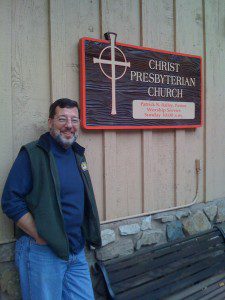
04 May REV. PAT BAILEY: EVOLVING LANDSCAPES, IN THE BEGINNING
Editor’s note: Rev. Pat Bailey, pastor of Telluride’s Christ Presbyterian Church, takes a developmental and evolutionary view of faith, spirituality, and religious community. Join him for his weekly blog as he explores the ever-changing landscapes of perspectives and consciousness and discusses both the challenges and promise of trying to make meaning in our evolving social context. Rev. Bailey holds a Master of Divinity from Columbia Seminary, a Master of Theology in comparative religion from Emory University, and will receive his Doctor of Ministry from San Francisco Theological Seminary in May.

Pastor Pat Bailey
Last week I introduced cosmologist Brian Swimme and his proposal that “seamlessness” is a way of describing the unity of the universe, the nature of which is pure generativity. I then compared Swimme’s seamlessness with the ancient Taoist cosmology of the universe as a single tissue infused with Chi. I think that Western religious traditions may also contain something similar.
One of the creation myths or myths of beginnings (there are actually three creation stories in Genesis) in the Jewish scriptures describes pre-creation as a state in which the earth was tohu va bohu, or a formless void, and darkness was upon the face of tehom, or the deep, and the ruach elohim, or breath of God, was vibrating upon the face of the waters. In this Hebrew presentation of beginnings, there is already something there: a chaotic or formless pre-matter, a watery womb-like deep, and the vibrations of Spirit. Recognizing that chaos is also the source of generativity, James Joyce coined the phrase “chaosmos” (Finnegans Wake) to describe creativity without origin or end.
This is a very different picture from creation ex-nihilo, or out of nothing, that develops in Christian theology around the 3rd century. The ex-nihilo view of origins, which may be a different assumption than “beginnings,” was considered necessary to protect the omnipotence and immutability of God conceived of as a supernatural being. The Hebrew version suggests that there is something coeternal with God, and that something is creativity itself, which I think corresponds with Swimme’s pure generativity, and Taoism’s single tissue. A view that might also be expressed in the Christian tradition when God is described essentially as love or as Spirit.
I am not saying that any of these terms or concepts describes the thing itself. What we have, though, in our traditions old and new are attempts to identify or name something that seems apparent: that the material universe seems to proceed in both its totality and its constituent parts toward a generativity and complexity that cannot be explained by materialism alone.


Sorry, the comment form is closed at this time.